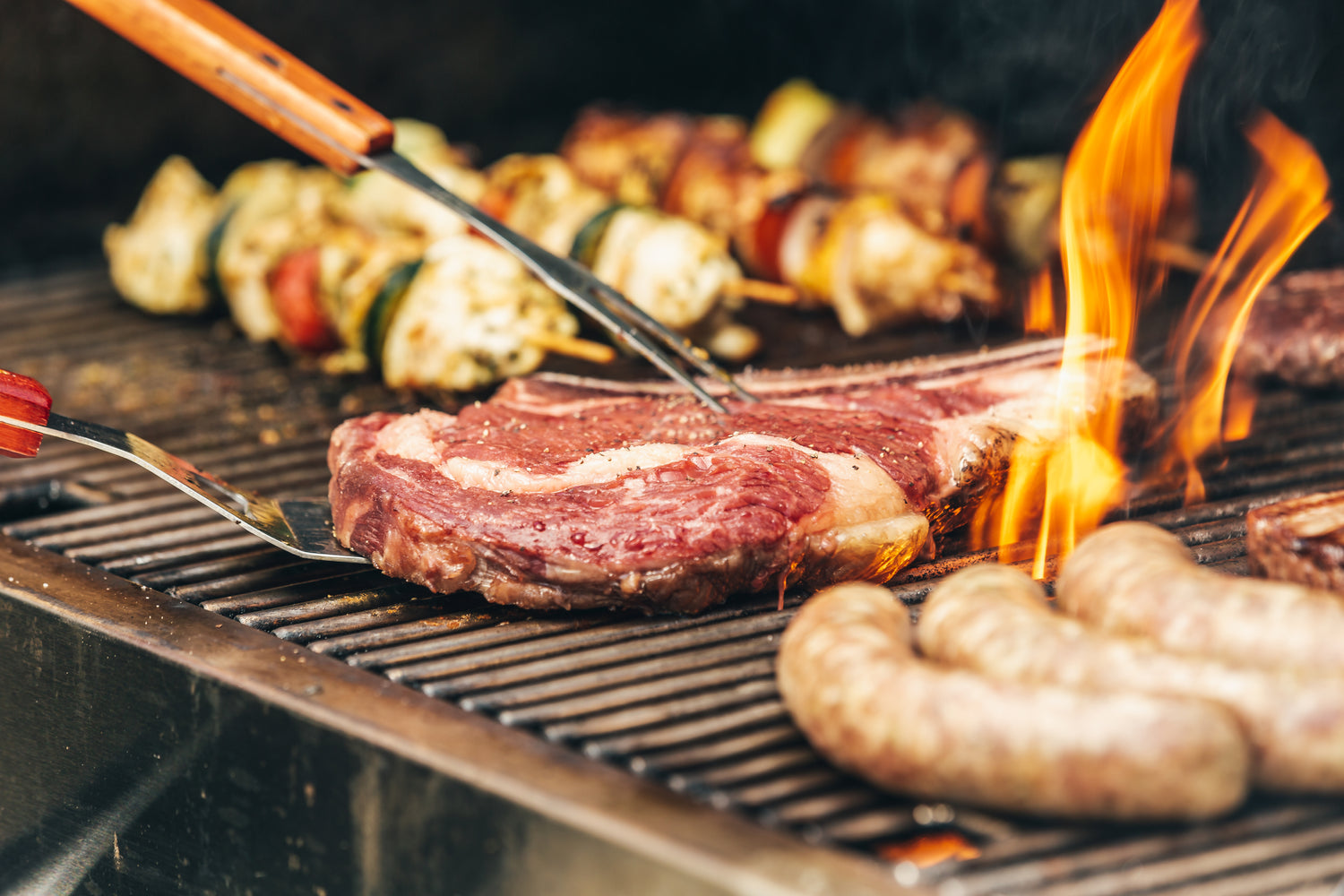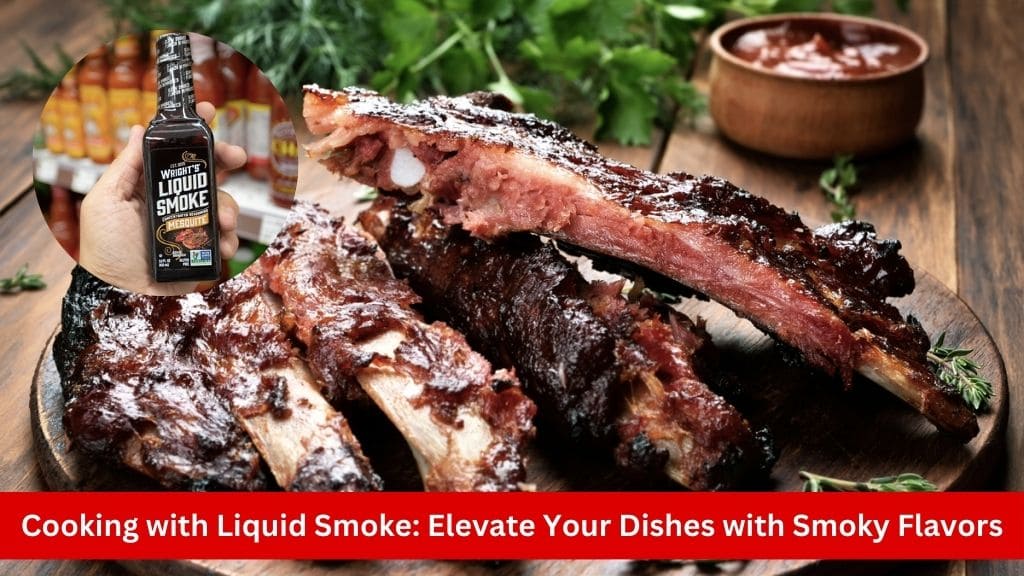Liquid smoke is a culinary secret weapon, offering a convenient way to infuse dishes with rich, smoky flavors reminiscent of outdoor barbecues and campfire cooking. Whether you’re a seasoned chef or a home cook looking to add depth and complexity to your recipes, learning how to cook with liquid smoke can take your culinary creations to the next level. In this comprehensive guide, we’ll explore everything you need to know about liquid smoke, from its origins and varieties to tips for incorporating it into your favorite recipes.
Understanding Liquid Smoke
:max_bytes(150000):strip_icc()/liquid-smoke-overview-335486-hero-01-12847733341544ed916a79f9155ceb62.jpg)
What is Liquid Smoke? Liquid smoke is exactly what it sounds like: smoke that has been captured and condensed into liquid form. It is typically made by burning wood chips or sawdust, then capturing the smoke and passing it through a condensation process to create a concentrated liquid infused with smoky flavor compounds.
The Process of Making Liquid Smoke
- Smoldering: Wood chips or sawdust are slowly burned, producing smoke.
- Condensation: The smoke is cooled, causing it to condense into liquid form.
- Filtration: The liquid smoke is filtered to remove any impurities or solids.
- Aging: Some varieties of liquid smoke may be aged in barrels to enhance their flavor.
Common Ingredients in Liquid Smoke
- Water
- Smoke flavor, naturally produced from smoking wood
- Vinegar
- Molasses
- Caramel color
- Salt
Exploring Different Types of Liquid Smoke

Varieties of Liquid Smoke
- Hickory: Known for its intense, bold flavor, hickory liquid smoke is a favorite for barbecue enthusiasts. It pairs well with pork, chicken, and beef dishes, adding a deep, smoky aroma and taste.
- Pecan: Pecan liquid smoke offers a slightly sweeter and milder flavor compared to hickory. It is often used in dishes where a subtler smokiness is desired, such as desserts or poultry dishes.
Availability and Regulations
- In the USA, a wide range of liquid smoke flavors are available, catering to diverse culinary preferences.
- In the EU, regulations are stricter, limiting the available flavors to hickory and pecan due to food laws.
Incorporating Liquid Smoke into Your Recipes
:max_bytes(150000):strip_icc()/__opt__aboutcom__coeus__resources__content_migration__serious_eats__seriouseats.com__images__2012__12__20121204-big-ass-steak-butter-basted-07-a9c999982d914a22a155db63143a6d10.jpg)
Understanding Flavor Profiles:
Before diving into incorporating liquid smoke into your recipes, it’s essential to understand the flavor profiles of different types of liquid smoke. Hickory liquid smoke offers a robust, intense smokiness that pairs exceptionally well with hearty meats like pork and beef. On the other hand, pecan liquid smoke provides a slightly sweeter and milder flavor, making it ideal for poultry, seafood, and even desserts.
Balancing Act:
When using liquid smoke in your recipes, it’s crucial to strike the right balance. Liquid smoke is highly concentrated, so a little goes a long way. Start by adding small amounts and gradually adjust to taste. Keep in mind that liquid smoke can easily overpower other ingredients if used excessively, so err on the side of caution.
Methods of Incorporation:
There are several ways to incorporate liquid smoke into your recipes, depending on the dish you’re preparing:
- Marinades: Liquid smoke can be added to marinades to infuse meats with smoky flavor before cooking. Simply mix a few drops of liquid smoke with your favorite marinade ingredients, such as oil, vinegar, herbs, and spices, then marinate your meat for several hours or overnight for maximum flavor penetration.
- Sauces and Glazes: Liquid smoke can elevate the flavor of sauces and glazes, adding depth and complexity to dishes. Whether you’re making barbecue sauce, teriyaki glaze, or honey mustard dressing, a splash of liquid smoke can take your sauce to the next level.
- Brushing and Basting: Brushing or basting meats with liquid smoke before or during cooking is another effective way to infuse them with smoky flavor. Whether you’re grilling, roasting, or smoking meats, a light coating of liquid smoke can enhance their taste and aroma.
- Seasoning: Liquid smoke can also be used as a seasoning for a variety of dishes, from soups and stews to salads and vegetables. Simply add a few drops to your dish during cooking or sprinkle it over the finished dish for a subtle smoky accent.
Recipe Inspiration:
To get you started, here are a few recipe ideas that showcase the versatility of liquid smoke:
- Smoky Pulled Pork: Slow-cook pork shoulder with a mixture of hickory liquid smoke, barbecue sauce, and spices until tender and falling apart. Serve on buns with coleslaw for a classic barbecue sandwich.
- Smoked Vegetable Skewers: Thread mixed vegetables onto skewers and brush with a marinade made from olive oil, pecan liquid smoke, garlic, and herbs. Grill until tender and charred for a flavorful vegetarian dish.
- Smoked Mac and Cheese: Add a few drops of hickory liquid smoke to your favorite mac and cheese recipe for a smoky twist on this comforting classic. Top with breadcrumbs and bake until golden and bubbly.
- Smoked Salmon Salad: Toss flaked smoked salmon with mixed greens, avocado, cherry tomatoes, and a dressing made from lemon juice, olive oil, and a touch of pecan liquid smoke for a refreshing and flavorful salad.
Alternatives to Liquid Smoke

Traditional Smoking Methods:
For those who prefer a hands-on approach to infusing smoky flavors into their dishes, traditional smoking methods offer an authentic and time-tested alternative to liquid smoke. Here are a few traditional smoking techniques to consider:
- Barbecue or Smoker: Invest in a barbecue grill or smoker to smoke your meats, fish, and vegetables over wood chips or charcoal. This method allows for precise control over the smoking process, resulting in rich, complex flavors and tender, juicy textures.
- Cold Smoking: Cold smoking is a method of smoking food at low temperatures (usually below 85°F or 30°C) for an extended period, typically several hours to days. This technique imparts a subtle smokiness to foods without cooking them, making it ideal for cheeses, nuts, and cured meats like bacon and salmon.
Smoked Ingredients:
In addition to liquid smoke, there are several smoked ingredients that can be used to add depth and complexity to your dishes. Here are a few examples:
- Smoked Paprika: Made from dried and smoked peppers, smoked paprika adds a robust, smoky flavor and vibrant red color to dishes. Use it to season meats, stews, soups, and roasted vegetables for a touch of smokiness.
- Chipotle Chili Powder: Chipotle chili powder is made from smoked and dried jalapeño peppers, lending it a spicy, smoky flavor. Sprinkle it over grilled meats, tacos, chili, and salsa for a fiery kick with a hint of smoke.
- Smoked Salt: Smoked salt is made by smoking sea salt over wood chips, infusing it with a subtle smokiness. Use it as a finishing salt to season grilled meats, roasted vegetables, salads, and even desserts for a unique and savory flavor.
Smoked Oils:
Another alternative to liquid smoke is smoked oils, which are infused with smoky flavors and can be used to add depth and richness to a variety of dishes. Here are a few examples:
- Hickory Oil: Hickory oil is made by infusing neutral oil (such as grapeseed or sunflower oil) with hickory smoke, resulting in a rich, smoky flavor. Use it to dress salads, drizzle over grilled meats and vegetables, or add depth to marinades and sauces.
- Mesquite Oil: Mesquite oil is similar to hickory oil but is infused with the distinctively sweet and nutty flavor of mesquite wood. Use it in the same way as hickory oil to add a unique smoky aroma to your dishes.
Experimentation and Creativity:
While liquid smoke is a convenient option for adding smoky flavors to dishes, exploring alternative methods and ingredients can yield equally delicious results. Whether you’re smoking meats on a barbecue, seasoning dishes with smoked paprika and chipotle chili powder, or drizzling them with smoked oils, the key is to experiment, get creative, and let your taste buds guide you. So don’t be afraid to try new techniques and flavor combinations—your culinary creations may surprise and delight you.
Conclusion
Cooking with liquid smoke is a versatile way to add depth and complexity to your culinary creations, whether you’re grilling outdoors or cooking indoors. By understanding the different types of liquid smoke, experimenting with recipes, and exploring alternative methods for achieving smoky flavors, you can elevate your dishes to new heights. So go ahead, unleash your creativity in the kitchen, and let the tantalizing aroma of smoky goodness take center stage in your next meal.

